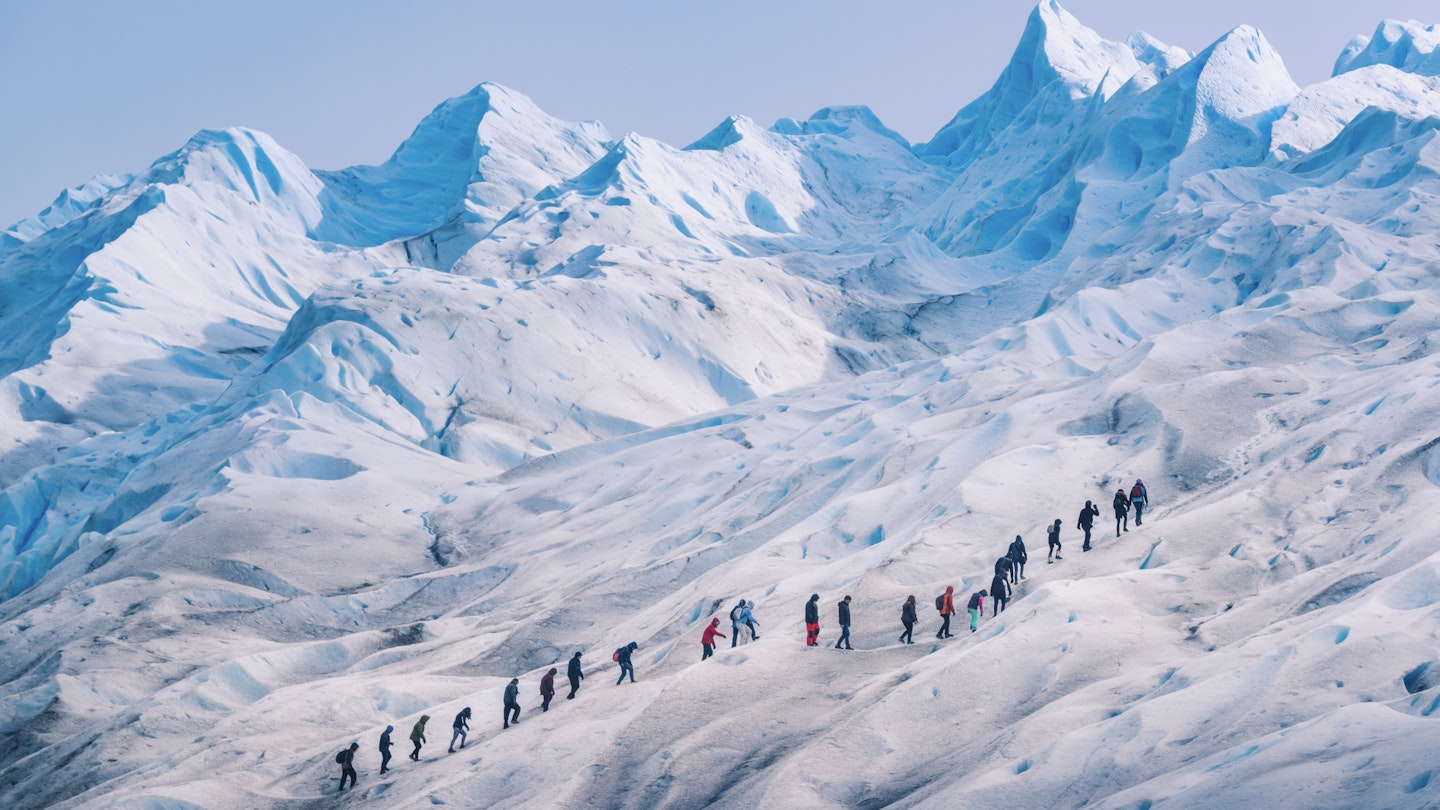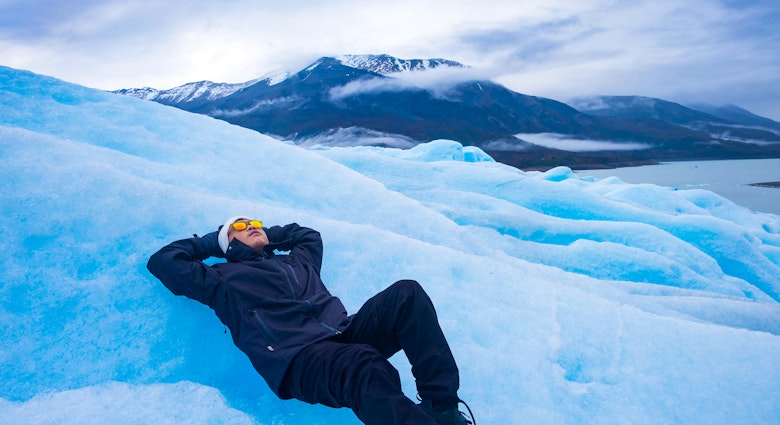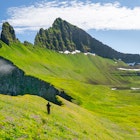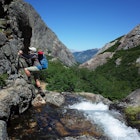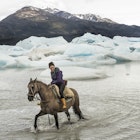Argentina serves up a truly beguiling mix of landscapes: ice fields and fossilized forests, humid wetlands and soaring mountains, plunging waterfalls and desert canyons, subtropical jungles and barren steppes. Its national parks are a wild playground for adventurers.
The country currently has 36 areas protected as parques nacionales, as well as an assortment of other protected national reserves, natural reserves and national monuments. Here are eight of our favorite national parks in Argentina.
Parque Nacional Iberá
Best for visiting in the winter
The vast wetlands of Parque Nacional Iberá in northeastern Argentina are a treasured haven for wildlife. More than 360 species of birds – from kingfishers and jabiru storks to roseate spoonbills and flightless tinamus – have been spotted here, as well as mammals and reptiles such as capuchin monkeys, caimans, and capybaras, the world’s biggest rodent. As part of a major rewilding project, a number of other species are being reintroduced to the park, including ocelots and anteaters.
Although you can visit Iberá throughout the year, the summer months can be ferociously hot and humid. By contrast, the winter – especially May–June and–August-September – is drier and pleasantly warm, with temperatures hovering around 25°C (77°F).
Parque Nacional Talampaya
Best for otherworldly landscapes
Made up of dusty desert canyons lined with ochre-red sandstone cliffs, monoliths and pinnacles, Parque Nacional Talampaya feels like it has been transplanted from Mars. Located in La Rioja province in mid-western Argentina, this UNESCO World Heritage Site can only be visited on a guided tour, but trips can be easily arranged at the visitor center or in the nearby town of Villa Unión.
Beyond the surreal rock formations, there are ancient petroglyphs, circling eagles and condors, and herds of guanacos, wild relatives of llamas. If you have the time, you can combine a tour of Talampaya with a visit to nearby Parque Provincial Ischigualasto, which is renowned for its rocky moonscapes and dinosaur fossils.

Parque Nacional Iguazú
Best for big splashes
Split between Argentina and Brazil and listed as a UNESCO World Heritage Site, the Cataratas del Iguazú are arguably the world’s most beautiful waterfalls. Flanked by sub-tropical rainforest, this mighty collection of cascades sits on the Río Iguazú, which divides into a multitude of channels before plunging over the edge of a vast, semi-circular plateau with fearsome power.
Both sides of the falls are national parks, but there’s more to explore in Argentina’s Parque Nacional Iguazú. Trails, boardwalks and bridges – some wheelchair-accessible – take you so close to the thundering waters that in some areas you can expect to get completely soaked.
It’s also worth also popping over the border to Parque Nacional do Iguaçu in Brazil for some stunning panoramic views of the falls. In both national parks, keep your eyes peeled for coatis – these raccoon-like creatures may look cute, but they’re devious experts at stealing food from unsuspecting travellers.
Parque Nacional Tierra del Fuego
Best for visiting in the summer
In Tierra del Fuego in the far south of Argentina, bounded by the Beagle Channel and Lake Fagnano, Parque Nacional Tierra del Fuego is an untamed expanse of mountains, forests, bogs, lakes and beaches. As you might expect given its location just 1,000km (620 miles) north of Antarctica, the park can be a challenging place to visit during the bitterly cold winter. It's far better to come in the spring, summer or early autumn (October–April), when it's warmer and drier, though you still need to prepare for rain and strong winds.
Beyond the scenery, the park is rich in birdlife such as austral parakeets, green-backed firecrown hummingbirds, condors and albatrosses. It's also worth visiting to travel on the touristy but historic End of the World Train – built by inmates of the local penal colony in the early 20th century – which runs to the edge of the park. Within the reserve, you’ll find ancient mounds of discarded mollusc shells left behind by indigenous peoples many centuries ago.
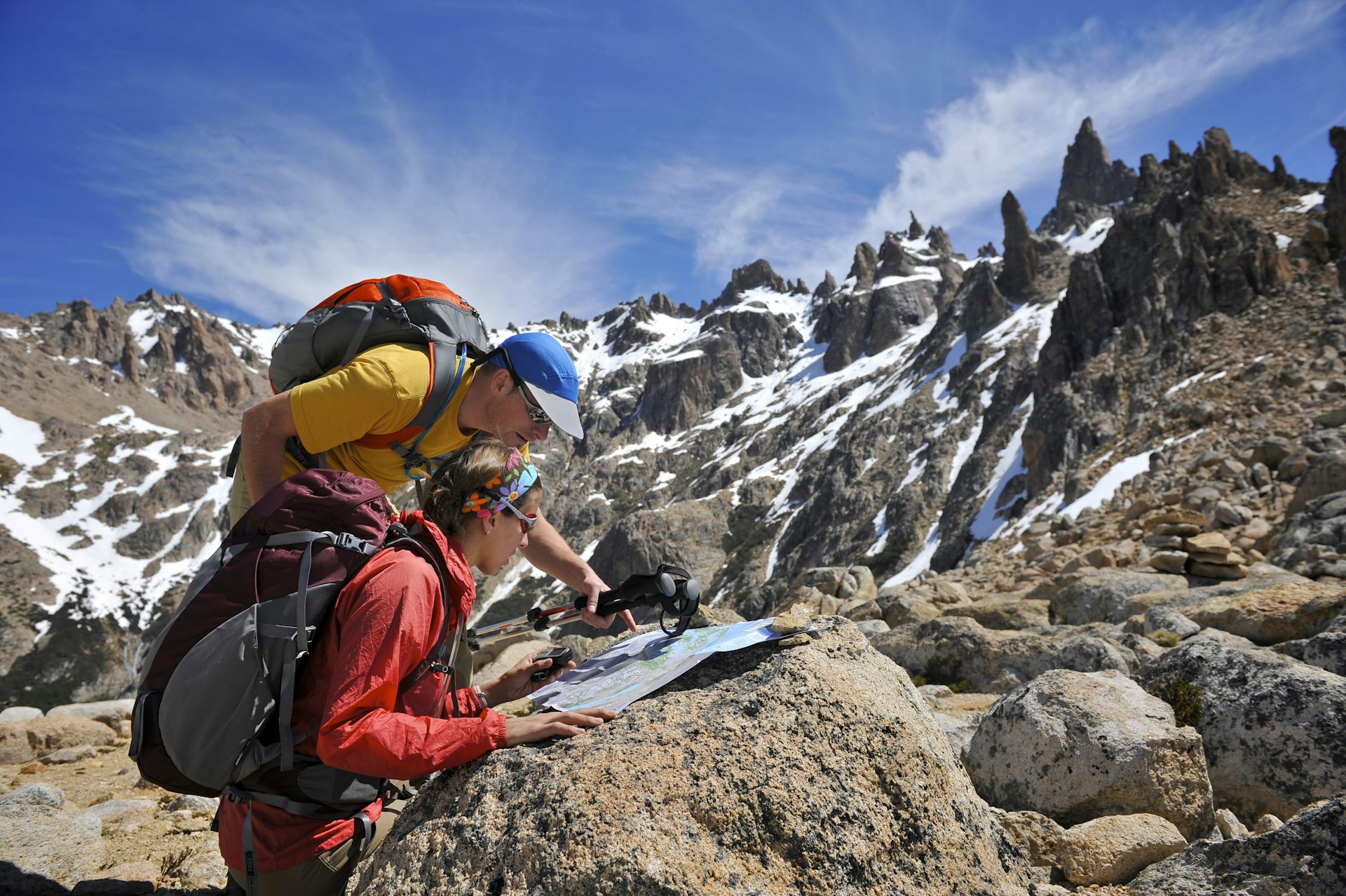
Parque Nacional Los Glaciares
Best for hiking
Covering a large chunk of the Campo de Hielo Patagónico Sur, the largest ice field in all of South America, Los Glaciares is one of Argentina’s most-visited national parks, and for good reason. With its jagged scenery and shark-tooth summits, the park protects some of the most dramatic landscapes on earth.
Listed as a UNESCO World Heritage Site, the park is divided into two sections. The southern sector, accessed from the village of El Chaltén, is a hotspot for hiking and mountain climbing, thanks to its clearly marked trails, well-maintained campsites, and a breathtaking sweep of ragged massifs, shimmering lakes and evergreen forests. Trails start right from the edge of El Chaltén, which is jam-packed with facilities for trekkers.
The northern sector, accessed from the touristy town of El Calafate, is famous for its world-class collection of glaciers, most notably Glaciar Perito Moreno – a true monster at 30km (19 miles) long, 5km (3 miles) wide and 60m (197ft) in height – which you can explore on a memorable guided ice-hike.
Parque Nacional Lanín
Best for volcano enthusiasts
In the Argentinian Lake District, straddling the Argentina-Chile border, Lanín is a perfectly shaped conical stratovolcano and a national landmark. Surrounded by gleaming lakes and forests of southern beeches, cypresses and araucarias – better-known outside of South America as monkey puzzle trees – its 3,776m (12,388ft) summit, topped with snow and ice, is an awe-inspiring sight.
There are several hiking routes snaking through the park, but the most challenging and rewarding is the trek to the top of Lanín itself. Although it doesn’t require extensive climbing experience, a good level of physical fitness and a knowledgeable local guide are essential. The risk of volcanic activity is low – Lanín last erupted more than 2,000 years ago.

Parque Nacional Nahuel Huapi
Best for outdoor activities
South of the Lanín volcano, and spanning 7,050 sq km (2,722 sq miles), Nahuel Huapi is Argentina’s oldest national park, founded in 1934. Sprawling around its namesake lake, the park features rugged mountain ranges and dense forests, all easily accessed from the tourist hubs of Bariloche and Villa La Angostura.
The park offers a dazzling array of outdoor activities and adventure sports. In the winter, it attracts skiers and snowboarders from across the continent. During the rest of the year, visitors can go swimming, hiking, mountain biking, fishing, kayaking, birdwatching and sailing. If that sounds too much like hard work, you can simply kick back in town and sample some of the region’s famous beer and chocolate.
Parque Nacional Bosques Petrificados de Jaramillo
Best for prehistoric encounters
An eerie forest of fossilized tree trunks spread across an isolated patch of Patagonian steppe, Bosques Petrificados de Jaramillo – also known as Monumento Natural Bosques Petrificados – is one of Argentina’s most unusual national parks. The park is a little tricky to visit – no public buses run here, so you’ll have to hire a car or take an organized tour from the coastal town of Puerto San Julián – but it's well worth the cost and effort.
In the Jurassic period, some 150 million years ago, this part of Argentina had a warmer, wetter climate and the landscape was covered with araucarias, pines, palm trees, ferns and shrubs, until a volcanic eruption covered them in ash. Today, the fossilized trunks – some of which are 3m (10ft) in diameter and 35m (115ft) in length – are a truly haunting sight.
You may also like:
The best hikes in Argentina: from ice fields to rainforest trails
The best places to visit in Argentina will thrill even the most seasoned traveler
Argentina's top 10 experiences will thrill visitors as they return in November

